Grow Nectar-Rich Native Plants for Hummingbirds
Updated: Jan. 12, 2024
From butterfly weed to golden currant, here's how to grow the best native plants for hummingbirds in every corner of the country.
On This Page
Grow a Hummingbird Native Plant Garden
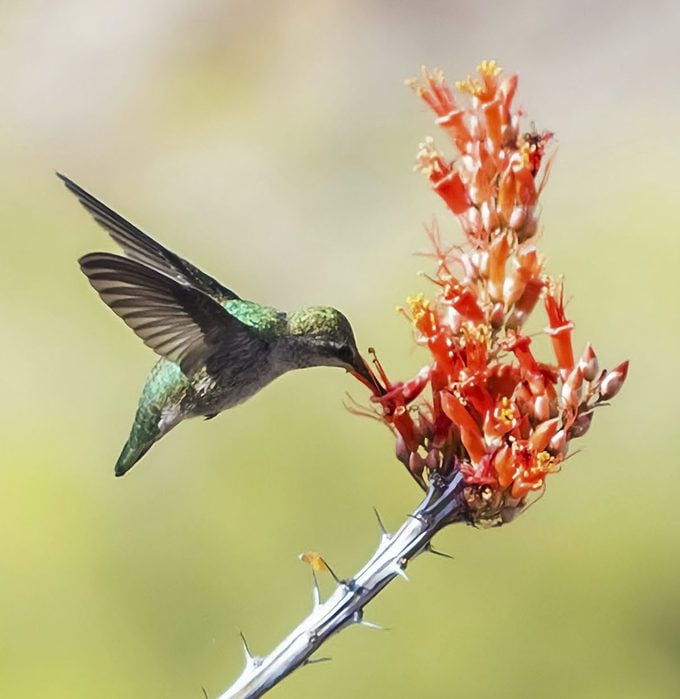
Hummingbirds migrate hundreds of miles every spring and fall in search of food to fuel their busy bodies. Plant a nectar-rich oasis in your yard for flying jewels to enjoy on their journeys—and during nesting season in summer—by incorporating into your garden the native plants for hummingbirds that they seek out naturally.
“Native plants play a big role in supporting wildlife,” says Alyssa Sargent, a University of Washington Ph.D candidate who studies tropical hummingbird ecology. “Research has shown that landscaping with native plants can support more birds: higher abundance, more species and more breeding pairs. Hummingbirds generally seek flowers that ‘match’ the lengths of their bills, which is true of many native flowers.”
In addition, Alyssa points out: “We see hummingbirds feeding most often from tubular flowers that are red or orange and sometimes pink. It depends on whatever the local climate supports.”
Use this regional list to create a specialized hummingbird garden full of nectar for your favorite tiny fliers.
Western Native Plants for Hummingbirds
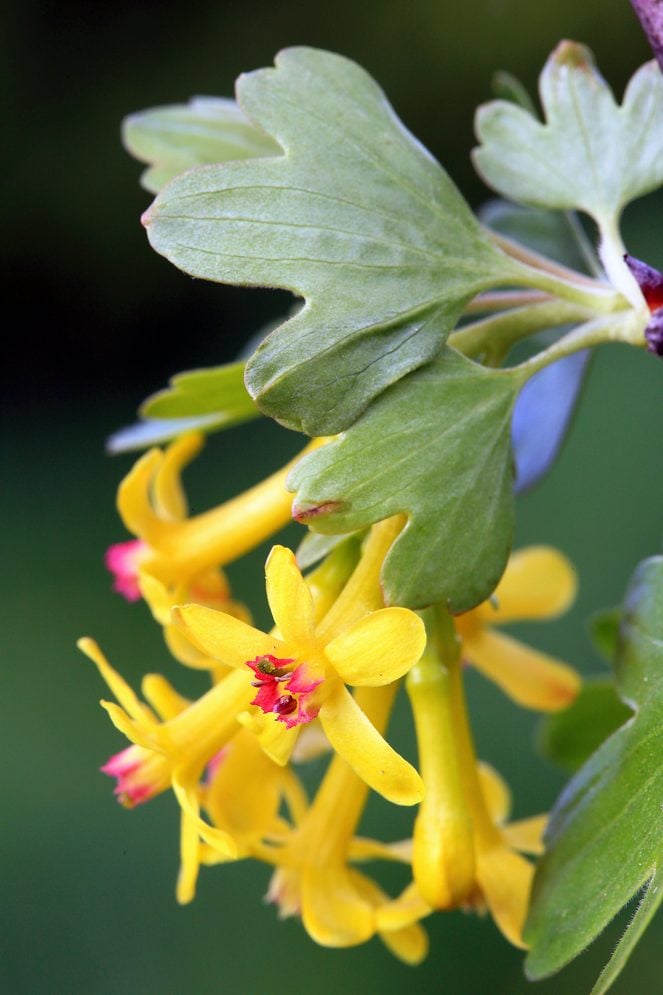
You’ve come to the right place if you’re after hummingbirds. Find rufouses and Calliopes in high concentrations in areas of the Northwest. Further south is home to broad-tailed and Allen’s. Anna’s is a year-round resident along the Pacific coast, while adaptable black-chinned hummingbirds thrive almost everywhere from urban gardens to pristine natural canyons.
Golden currant
Ribes aureum, Zones 3 to 8
Golden yellow flowers with a strong clove-like fragrance appear in early spring. Use as an informal hedge or in a border where it’ll grow about 6 feet high and 6 to 10 feet wide.
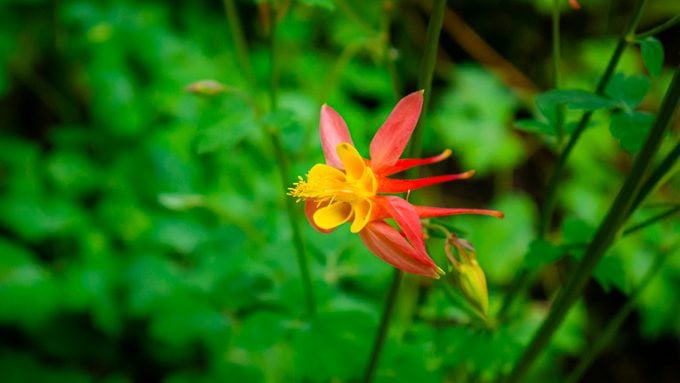
Western columbine
Aquilegia formosa, Zones 3 to 9
With bright red sepals and sunshine yellow petal blades, the nodding flowers are hard to miss—for both gardeners and hummingbirds! Grow in beds and borders with full sun to part shade for a pop of color late May through August.
Scarlet bugler
Penstemon centranthifolius, Zones 8 to 10
Brighten up waterwise gardens and naturalized areas with this perennial favorite that also attracts native bees and butterflies. It tolerates areas with cold winters within its hardiness zones.
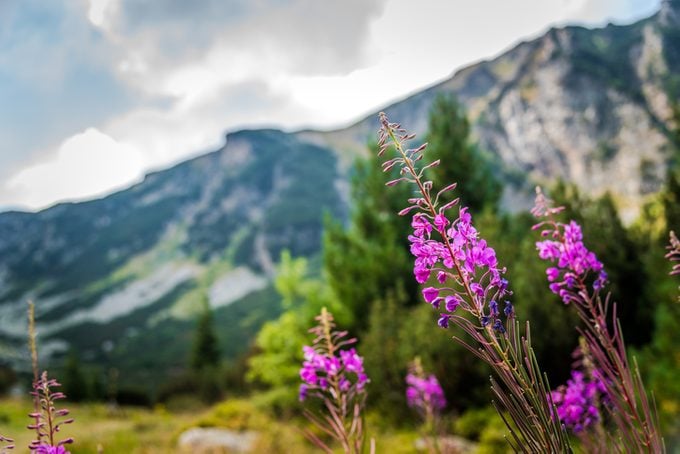
Fireweed
Chamerion angustifolium, Zones 2 to 7
This tall, showy wildflower looks natural when planted in meadows, as well as woodland, rock and cottage gardens with moist soil and full sun. Clusters of pinkish purple flowers appear in early summer.
Southwestern Native Plants for Hummingbirds
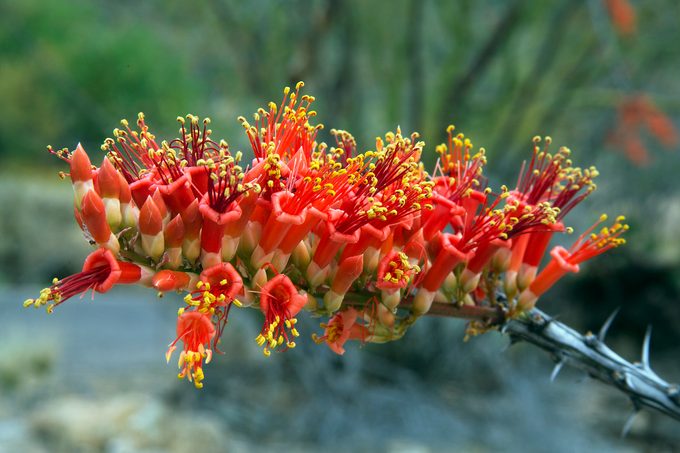
Costa’s hummingbirds live in the Sonoran and Mojave deserts of Arizona and California, while black-chinneds, rufouses and Anna’s are more widespread across this arid area.
Ocotillo
Fouquieria splendens, Zones 7 to 10
Bright clusters of red flowers atop long, spiny stems make this unusual-looking plant impossible to miss. It’s a significant food source during the northern spring migration of hummingbirds seen in this region.
Beard-lip penstemon
Penstemon barbatus, Zones 4 to 8
Best for sunny areas, this penstemon grows up to 3 feet tall. Sparsely leaved stems allow hummingbirds easy access to the scarlet tubular blooms in early summer.
Want to add more color to your garden? Find even more colorful flowers for hummingbirds.
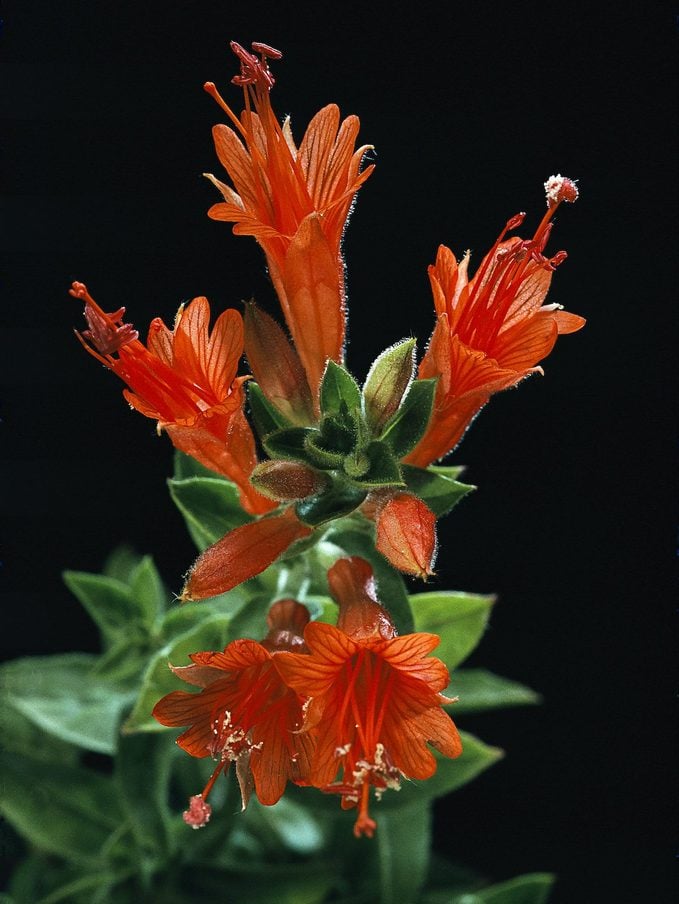
California fuchsia
Epilobium canum, Zones 8 to 10
Also called hummingbird trumpet, this shrubby plant sports bright red blooms after many wildflowers go to seed. This is extremely helpful timing for the start of the southward migration of many hummingbirds.
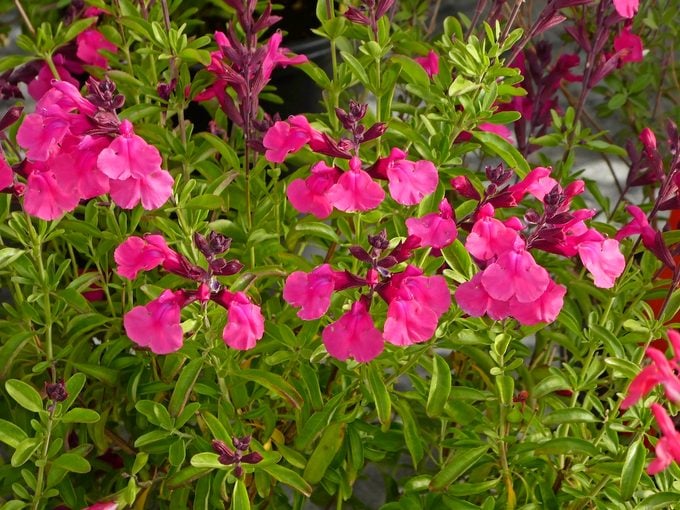
Autumn sage
Salvia greggii, Zones 6 to 9
This small shrub is evergreen in southern hardiness zones and produces trumpet-shaped flowers in shades of red, pink, purple, orange and white in summer and fall. A drought-tolerant native, autumn sage does best in full sun without overwatering.
Check out the top 10 salvias to grow for hummingbirds.
Midwestern Native Plants for Hummingbirds
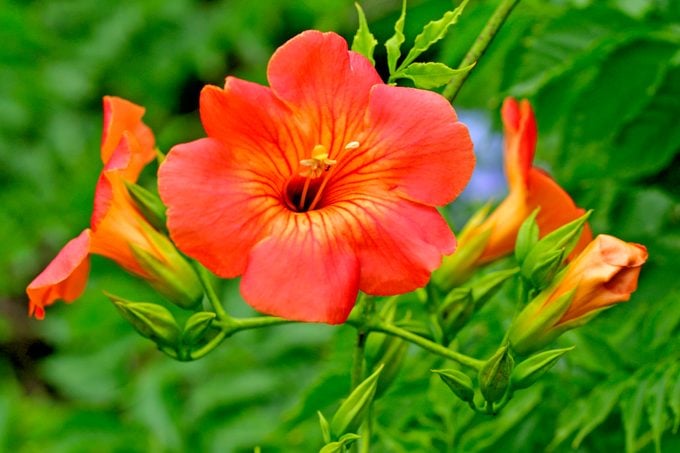
There is only one common hummingbird species found in the Midwest. If you guessed ruby-throated, you’re right! Look for these tiny fliers in semi-open habitats such as suburban backyards, parks, gardens, meadows and forest edges.
Trumpet vine
Campsis radicans, Zones 4 to 10
This high-climber’s vibrant orange-red flowers are irresistible. It blooms throughout summer and can reach 35 feet, making it the perfect planting companion for a pergola or fence. It’s native to many areas of the U.S., but check before planting in the Southeast, where it can be invasive.
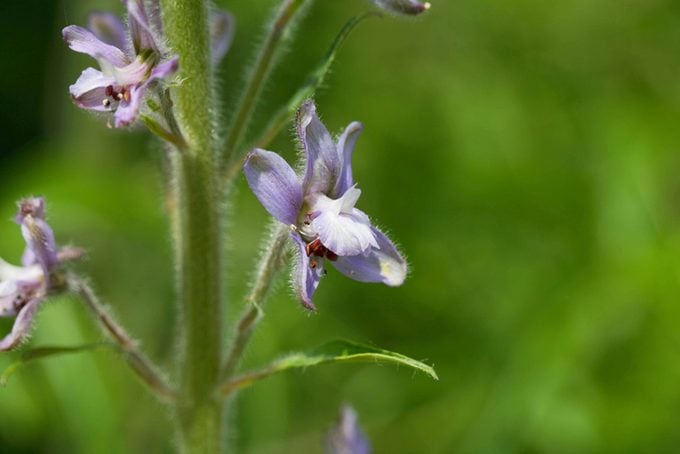
Tall larkspur
Delpinium exaltatum, Zones 4 to 7
Its brilliant blue-purple flowers of delphinium add color to woodland and cottage gardens from July to September. Reaching 6 feet tall, this perennial should be grown in full sun (or in part shade in warmer climates) and in rich, well-draining soil.
Bring in your favorite flying jewels with these best purple flowers for hummingbirds.
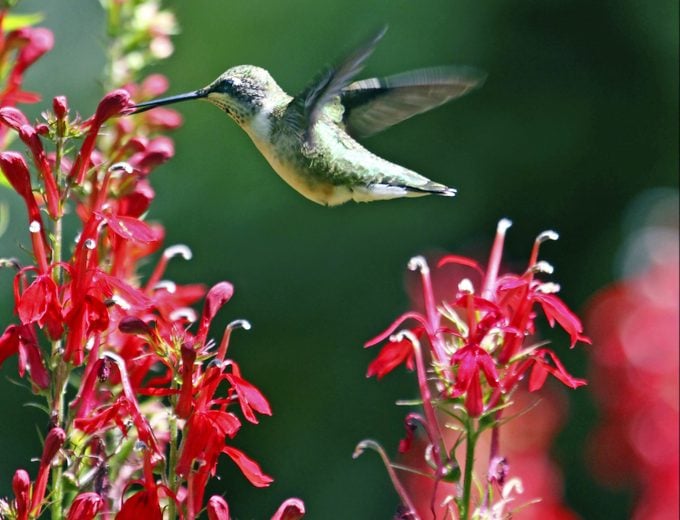
Cardinal flower
Lobelia cardinalis, Zones 3 to 9
This flower’s name was inspired by the hue of the robes worn by Roman Catholic cardinals. Naturally found in areas with moist soil, cardinal flower will be at home in rain gardens or along water features.
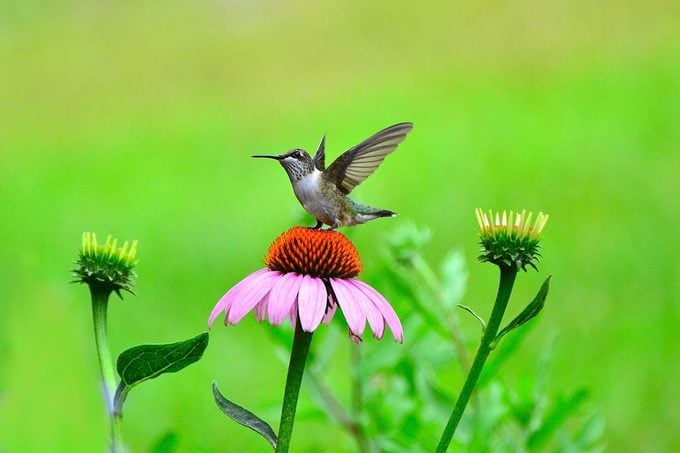
Purple coneflower
Echinacea purpurea, Zones 3 to 8
Here’s a long-blooming plant with pinkish purple flowers that dazzle early summer through mid-fall. Drought and deer tolerant and low maintenance once established, purple coneflower reseeds itself in the garden every year.
Northeastern Native Plants for Hummingbirds
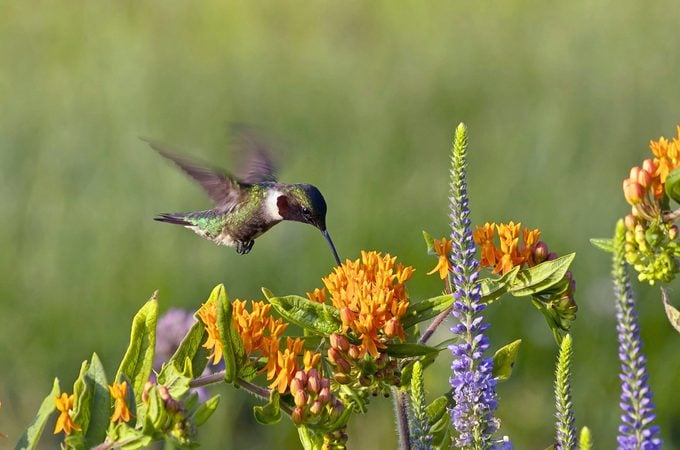
Fun fact: Ruby-throats are the only hummingbirds to nest east of the Mississippi River. Encourage backyard visits by growing a few of these Northeast-friendly picks with essential nectar sources.
Butterfly weed
Asclepias tuberosa, Zones 3 to 10
This common meadow plant’s bold orange star-shaped blooms make it a beautiful cut flower. But leave plenty for the hummingbirds, as each clump offers a bounty of nectar (and butterfly weed also serves as a host plant for monarchs).
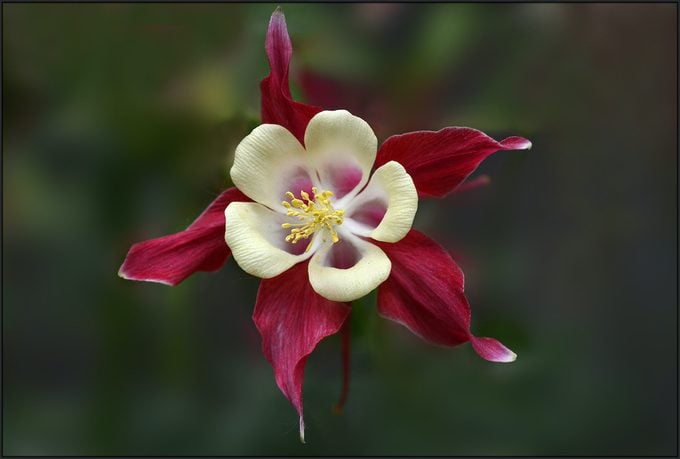
Eastern red columbine
Aquilegia canadensis, Zones 3 to 8
A woodland wildflower with nodding red and yellow bell-like flowers, this perennial peaks in spring just when hummingbirds are making their return journeys to the U.S.
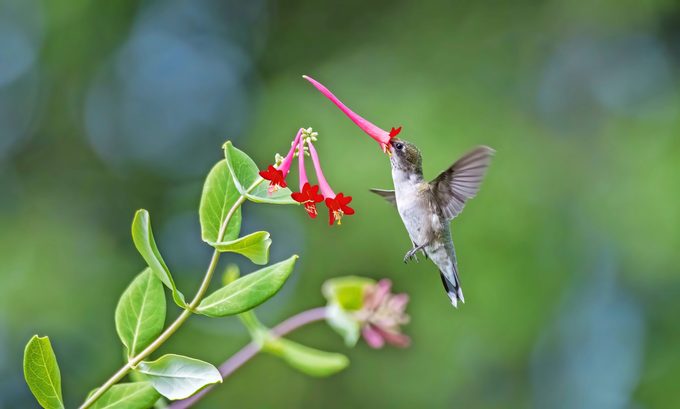
Trumpet honeysuckle
Lonicera sempervirens, Zones 4 to 9
Boasting trumpet-shaped flowers that are red on the outside and yellow inside, this popular vine’s nonaggressive growing nature makes it either an easy climber or ground cover.
Find even more vines to grow for hummingbirds.
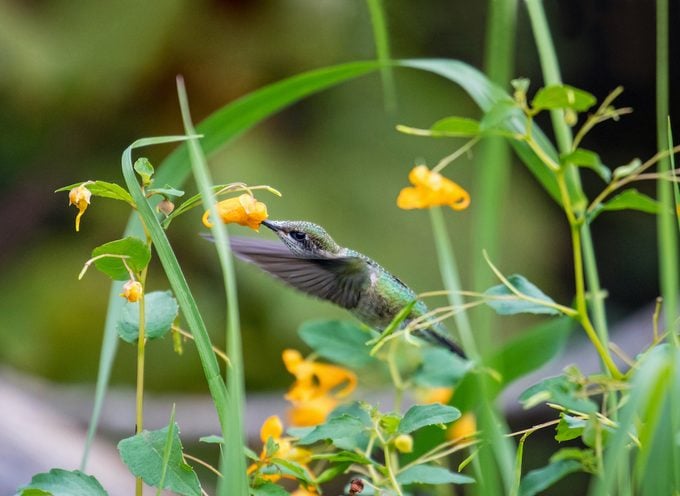
Jewelweed
Impatiens capensis, Zones 2 to 11
A midsummer to fall bloomer with yellowish orange flowers speckled with red, it naturally thrives in moist, shady areas and can even outcompete invasive garlic mustard.
Southeastern Native Plants for Hummingbirds
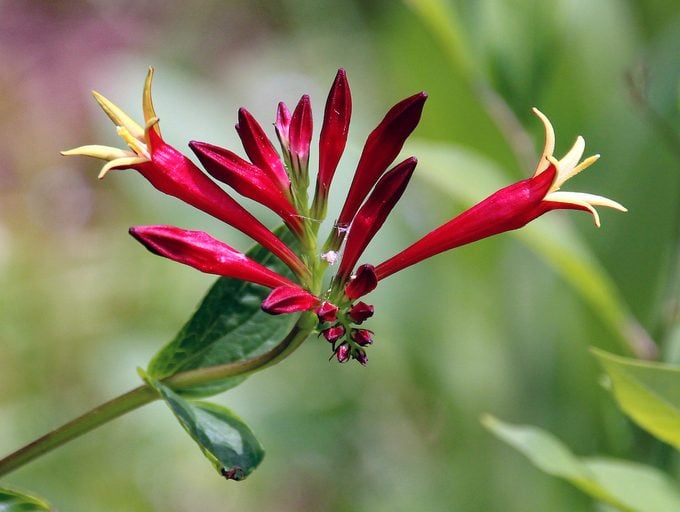
Ruby-throated hummingbirds reign supreme in this region where native plants can take the heat. As a bonus, wandering black-chinned or rufous hummingbirds are sometimes seen in winter.
Indian pink
Spigelia marilandica, Zones 5 to 9
Truly dramatic red- and yellow-throated tubular flowers set the garden ablaze with color from late spring to summer. Extend the flowering season by removing spent blooms.
Canada lily
Lilium canadense, Zones 3 to 7
A summer stunner with as many as 20 red, orange or yellow blooms on one plant, it’s hard to miss this showy perennial at 3 to 8 feet tall.
Red buckeye
Aesculus pavia, Zones 4 to 8
Grown as a small tree or large shrub, this native is happy in full sun to part shade, though afternoon shade is recommended in areas with intense heat. Its tubular flowers impress in hues of orange to red in late spring.
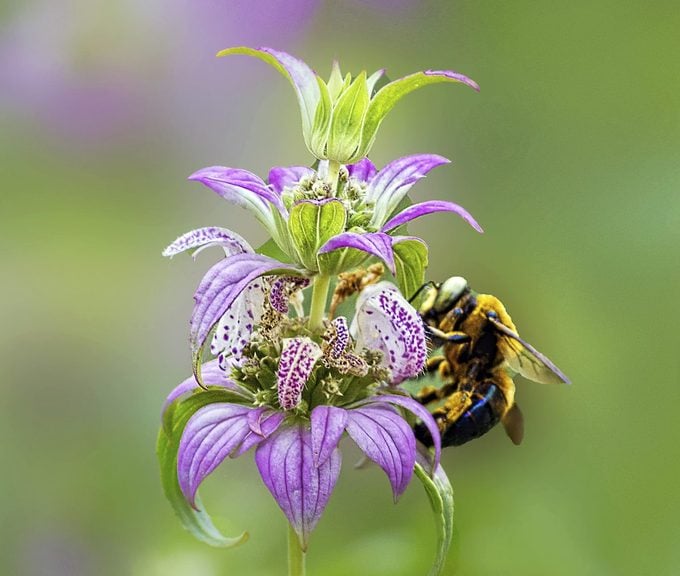
Spotted bee balm
Monarda punctata, Zones 3 to 9
Able to tolerate dry spells, this aromatic member of the mint family boasts rosettes of purple-spotted flowers that form a showy spike. Plant bee balm in full sun for a midsummer to early fall show.
Next, check out the top 10 hummingbird plants that grow in shade.
Why Trust Us
For nearly 30 years, Birds & Blooms, a Trusted Media Brand, has been inspiring readers to have a lifelong love of birding, gardening and nature. We are the #1 bird and garden magazine in North America and a trusted online resource for over 15 million outdoor enthusiasts annually. Our library of thousands of informative articles and how-tos has been written by trusted journalists and fact-checked by bird and garden experts for accuracy. In addition to our staff of experienced gardeners and bird-watchers, we hire individuals who have years of education and hands-on experience with birding, bird feeding, gardening, butterflies, bugs and more. Learn more about Birds & Blooms, our field editor program, and our submission guidelines.
Sources
- https://www.fs.usda.gov/wildflowers/pollinators/documents/AttractingHummingbirdsFS-1046April2015.pdf
- https://hort.extension.wisc.edu/articles/hummingbirds-in-the-garden/
- https://www.therubythroat.com/
- https://abcbirds.org/blog/do-hummingbirds-migrate/
- https://www.wildflower.org/plants/result.php?id_plant=aqca
- https://hort.extension.wisc.edu/articles/eastern-red-columbine-aquilegiacanadensis/
- https://www.wildflower.org/plants/result.php?id_plant=lose
- https://hort.extension.wisc.edu/articles/jewelweed-impatiens-capensis/
- https://www.fs.usda.gov/wildflowers/plant-of-the-week/impatiens_capensis.shtml
- https://www.wildflower.org/plants/result.php?id_plant=astu
- https://www.fs.usda.gov/wildflowers/plant-of-theweek/asclepias_tuberosa.shtml
- https://hort.extension.wisc.edu/articles/butterflyweed-asclepias-tuberosa/
- https://www.wildflower.org/plants/result.php?id_plant=lica3
- https://gobotany.nativeplanttrust.org/species/lilium/canadense/
- https://www.wildflower.org/plants/result.php?id_plant=aepa
- https://www.missouribotanicalgarden.org/PlantFinder/PlantFinderDetails.a spx?taxonid=281049
- https://www.wildflower.org/plants/result.php?id_plant=MOPU
- https://wisconsinpollinators.com/Plants/P_Details.aspx?plantid=325
- https://plants.ces.ncsu.edu/plants/spigelia-marilandica/
- https://grownative.org/native_plants/indian-pink/
- https://www.wildflower.org/plants/result.php?id_plant=spma3
- https://www.wildflower.org/plants/result.php?id_plant=cara2
- https://www.keystonewildflowers.com/product/delphinium-exaltatum/
- https://plants.ces.ncsu.edu/plants/delphinium-exaltatum/
- https://www.wildflower.org/plants/result.php?id_plant=loca2
- https://hort.extension.wisc.edu/articles/cardinal-flower-lobelia-cardinalis/
- https://plants.ces.ncsu.edu/plants/echinacea-purpurea/
- https://www.fs.usda.gov/wildflowers/plant-of-theweek/fouquieria_splendens.shtml
- https://www.missouribotanicalgarden.org/PlantFinder/PlantFinderDetails.a spx?taxonid=287041
- https://www.wildflower.org/plants/result.php?id_plant=peba2
- https://www.wildflower.org/plants/result.php?id_plant=epca3
- https://www.missouribotanicalgarden.org/PlantFinder/PlantFinderDetails.a spx?taxonid=257344&isprofile=0&chr=12
- https://www.wildflower.org/plants/result.php?id_plant=sagr4
- https://southwest.audubon.org/conservation/plants-attract-hummingbirds
- https://grownative.org/native_plants/golden-currant/
- https://conservationgardenpark.org/plants/316/golden-currant
- https://www.fs.usda.gov/wildflowers/plant-of-theweek/aquilegia_formosa.shtml
- https://cwelwnp.usu.edu/westernnativeplants/plantlist_view.php?id=15&na me=aquilegiaformosa
- https://calscape.org/Penstemon-centranthifolius-(ScarletBugler)?srchcr=sc5ab02eeaa1f74
- https://www.fs.usda.gov/wildflowers/plant-of-theweek/chamerion_angustifolium.shtml
- https://www.minnesotawildflowers.info/flower/fireweed




















